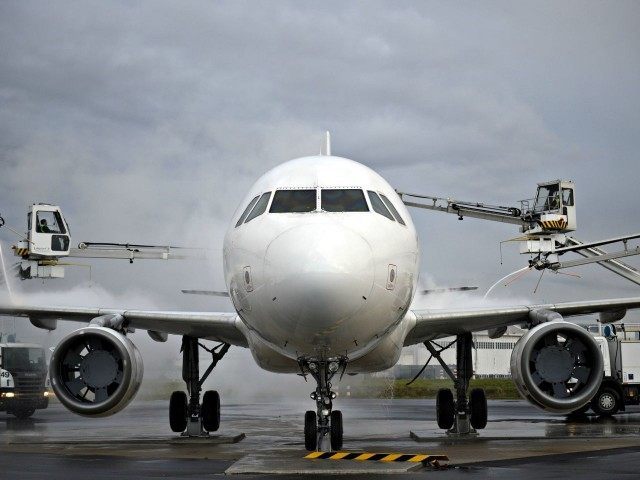Just weeks after Boeing sold off all the equipment at its 1.1 million square foot Long Beach, CA factory, Europe’s Airbus officially opened in Alabama what the company promises will be the most cost-efficient commercial airliner assembly plant in the world.
Airbus (OTCPK:EADSY) inaugurated its first U.S. assembly plant this morning at the Brookley Aeroplex just outside Mobile, Ala. The company claims it has invested more than $600 million in a state-of-the-arts facility to build up to 5,000 commercial airliners over the next 20 years.
The new plant could soon directly employ as many as 1,000 workers to initially produce A320 short-haul passenger planes. The production site includes 53 acres of buildings, aprons and roadways on a 116 acre site that is primed for future expansion to add assembly of A321 jets. Over the next three years the plant will produce up to 50 airplanes a year, about 10 percent of global A320s production.
The Economic Development Association of Alabama has been training workers for the high-paying skill positions at the plant that is expected to have a $61.7 million annual payroll. But the real economic impact will come from the leverage of the plant on the state’s economy that is expected to enjoy another $409 million of additional economic output and 3700 additional full time jobs.
Greg Canfield, Alabama Secretary of Commerce, said regarding training, “This is all critically important because we know Airbus has high expectations for its final assembly line in Alabama.” He added, “We want to support and exceed those expectations. We’re confident that if we do, it will lead to other opportunities down the road.”
Chief Executive of Charles, South Carolina’s Strategic Development Group Inc., Mark Williams, told Al.com that he believes Alabama’s optimism is justified. He has watched Boeing move $2.25 billion in investment and 4,500 jobs from the heavily unionized, oppressively regulated and highly taxed states of Washington and California to his community, which has become the center for assembling 787 Dreamliner jets.
With Airbus in Mobile and Boeing in Charleston, Williams expects key aerospace suppliers will locate between the two plants as the industry and demand grows. “Alabama, Georgia and South Carolina are in a delightful position as it relates to the future of aeronautics in America.”
Over the last decade, California has lost half of its 35,000 Boeing employees who were working at very good jobs at very good wages. The biggest losses came from Boeing’s cavernous military aircraft assembly plant in Long Beach that once produced 50,000 jobs and still accounted for 14,000 California jobs in 2010.
Facing increasing competition from Europe’s Airbus, Boeing offered the plant’s 5,000 members of the United Auto Workers Local 148 union a new three year contract in 2010. The offer included 3.4 percent annual pay raises, but demanded workers accept lower Boeing pension contributions and employees pay higher medical plan co-pays to remain competitive against Airbus.
Despite just receiving several new international defense orders, the union on May 12, 2010 walked-out at midnight in their first strike against Boeing in 25 years. Starting the next day, workers with picket signs lined Lakewood Boulevard 24 hours a day and shouted epithets at the company management and “scab” at workers who crossed the picket lines.
“We’ll be out here as long as it takes,” John Hobson, 62, a maintenance mechanic who has worked at the plant since 1980, told the Los Angeles Times at the time. “It could take two weeks or it could take two months.”
Industry analysts were appalled that the UAW would walk out. The strike ended a month later and Boeing started making plans to shut down the site. The plant’s closing in mid-2014 ended aircraft manufacturing in California and caused about 3,800 additional jobs losses in and around Long Beach.

COMMENTS
Please let us know if you're having issues with commenting.